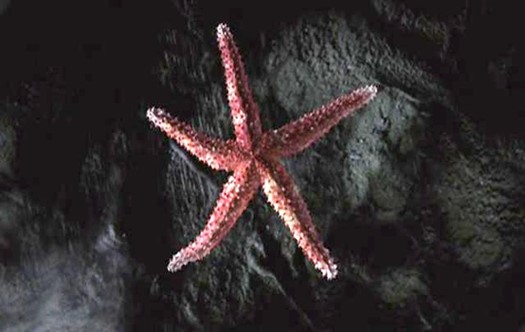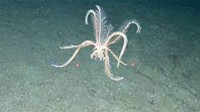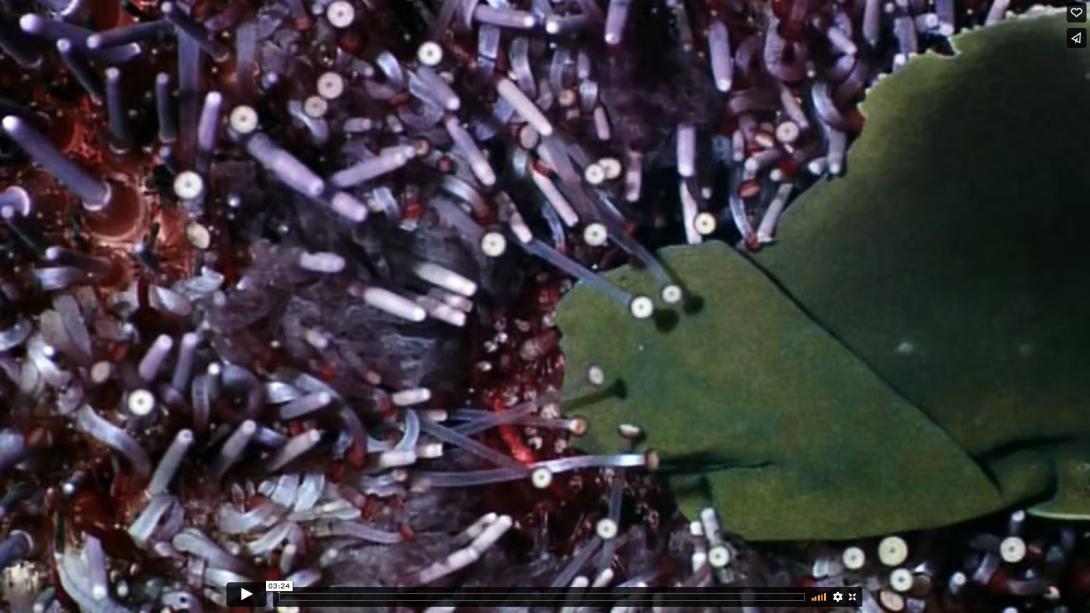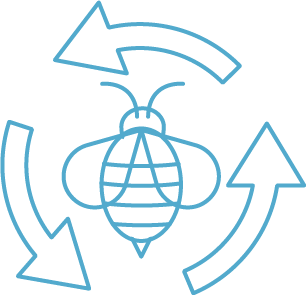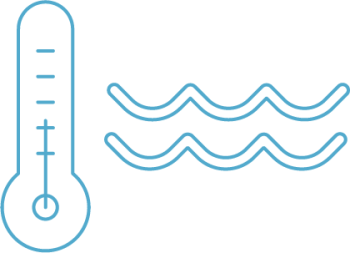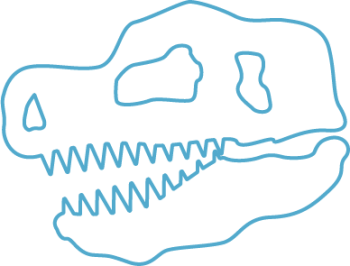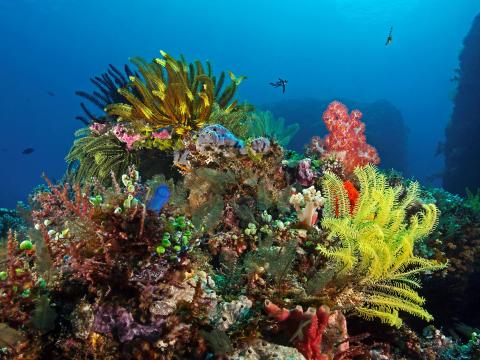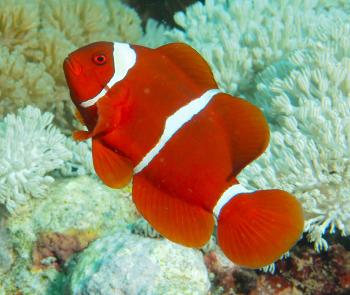Read ECHINODERMS: GIVE ME FIVE An Ultimate Animal from the Shape of Life Book.
More information about echinoderms. In the left-hand column, click on the bottom link, “Ocean Animals.” Another column will appear immediately to the right. Click on echinoderms. Unfortunately there is no direct link to this page.
Read about the main characteristics of echinoderms. Here is a more advanced article about echinoderms from the Tree of Life project with a discussion of the four characteristics common to all living ones.
One of the defining characteristics of echinoderms is their unique water vascular system. This reading describes how the system works and has an advanced discussion of its possible evolution.
This chapter has good information and images of all types of echinoderms: "Invertebrates - Multi-celled Animals: Echinoderms." And here is another site with a wide variety of pictures of echinoderms from the University of Michigan Animal Diversity Web.
Here is Good general information about sea stars. Sea stars have defenses just like all animals, but they’re hard for us to see. This article talks about various sea star defense mechanisms including: thick leathery bodies; spines on the underside; and production of large amounts of mucous. Discover how sea stars can regenerate arms in this article from UCSB Science Line.
Echinoderms have the remarkable ability to, at will, make themselves really stiff and hard or make themselves very soft. This allows sea stars, for example to hold on tightly to rocks and then let go. Or for sea cucumbers to squeeze into a tight space when soft and then harden so they will stay there. How do they do this? Echinoderms have a specialized connective tissue packed with a special type of collagen, called catch collagen.
Brittle stars are the largest group of Echinoderms. They live in both shallow and deep waters and sometimes carpet the sea floor. Learn more on The Echinoblog. Also check out additional information: Brittle Stars are Everywhere: 5 Extreme Ophiuroid Habitats! Here is good general information about brittle stars. Here is the Encyclopedia of Life’s photos of sea stars, brittle stars, and basket stars.
Basket stars are in the same family as brittle stars, the Ophiuroidae. They can get to be very large and have very highly branched arms that are even more flexible than those of brittle stars.
Crinoids, or sea lilies, are stalked echinoderms that live on the sea floor, looking a lot like plants.
Here is an excellent interactive about urchins from their embryology to climate change.
Urchins have five-part symmetry just like all echinoderms. Here is general information
about urchins. The purple urchin is abundant along the coast of California. Sea urchins have unique jaws called Aristotle’s lantern.
Learn more about sea cucumbers at the National Ocean Service website from NOAA and from the Marine Education Society of Australasia. Read about a sea cucumber’s bizarre defense behavior: "The Importance of Being Honest: The Sea Cucumber Spills All." The Encyclopedia of Life or EOL has a lot of photos of cucumbers.
Deep Sea
There are lots of echinoderms in the deep sea. Here is more information about deep sea cucumbers and how they swim. And another article from Schmidt Ocean.
Many deep sea animals are transparent. There is no light in the depths, so they don’t bother to make pigments. Here is a transparent cucumber.
Here is information from the Monterey Bay Aquarium Research Institute about a deep sea cucumber called a sea pig.
